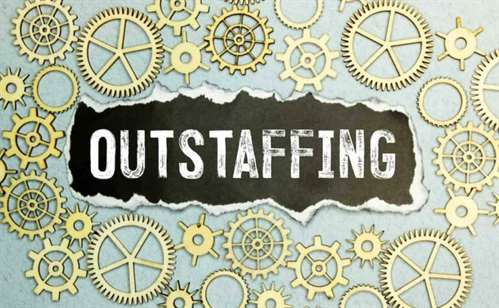Turn your Azure DevOps project into an efficient, collaborative workspace with Modern Requirements4DevOps. Create, automate, manage, analyze, and report across siloed teams from your Azure DevOps project. Based on your goal, you’ll start to collect relevant artifacts that include at least the requirements, tests, test results and issues. After you’ve collected the artifacts, you’ll want to get the most current requirements documents. Each requirement should have a unique ID number that doesn’t change, even if the requirement is reordered.
Horizontal trace-ability matrix documents the inter-dependency between requirements. Once dependency identified it will be easy perform impact analysis. The traceability matrix allows you to have a full end-to-end analysis of work items including TEST CASES and TEST RESULTS. Tracing of requirements to the level of testing in relation to the levels of documentation (e.g. test plan, test design specification, the specification of test scenarios and specification of test procedures and automated test script). Allow your team to easily output any requirements directly from your Azure DevOps projects with reports. Easily capture changing requirements by baselining your requirements before and after reviews.
Streamlined DevOps, enhanced collaborations, & reduced project timelines
Attach requirements directly to mockups you already have or create new ones. Use this tool to write use Cases textually and automatically generate a Use Case Diagram. Same hierarchy can be created while showing the work in Trace Analysis. Parameter added in Test case steps can be seen by adding “Test Parameter” field from column options in Trace analysis and through “Report Designer” in Smart Report.
For instance, a column that numbers each of the requirements would be useful. Are you planning to introduce a project management software solution to your employee? To help you make the right choice, we’ve gathered the best project management web applications. Bidirectional traceability incorporates elements of both forward and backward traceability. This is the goal for your projects; you need to be able to evaluate both forward and backward — identify problems, and then identify why those problems occurred, and when. For example, you begin in the research phase and work your way through your RTM, from tests to status to failures/problems.
Revive the RTM
If the test fails, then whatever issues led to that failure should be detailed. It is very helpful when analyzing project errors because teams can match tests with project requirements. This means that your test cases will be applied to multiple requirements with ease. With this type of traceability, you start with your project tests/outcomes and work backward.
ProjectManager is online project management software that allows you to track requirements in real time. As teams implement and test requirements, everyone gets transparency into the process to ensure that nothing is neglected. Traceability software makes it easier to establish relationships between artifacts. And using this software helps you create a traceability matrix — for compliance or to manage risk. One of the key reasons this is such a critical point is in instances where an issue of contamination arises, and a recall is required.
Best Project Management Software for Mac 2023
A digital requirements traceability matrix can be used simultaneously by multiple project members, and previous data is readily available. Vertical traceability demonstrates the consistency of dates, status, and scope requirements between different levels of a schedule—summary, intermediate, and detailed. When schedules are vertically traceable, lower-level schedules are clearly consistent with upper-level schedule milestones, allowing for total schedule integrity and enabling different teams to work to the same schedule expectations. An activity owner should be able to trace activities to higher-level milestones within intermediate and summary schedules.

No matter how you decide to implement a requirements traceability matrix into your organization, it will likely transform your workflow for the better. RTM documents help to focus your team’s energies on the most pressing problems. They also stop you from inadvertently completing the same test cases without improving your project. Indeed, projects can be costly to develop and pursue, and your team should take advantage of any tool that promises to save time and improve your work. And one such tool, of course, is a requirements traceability matrix. For details, refer to Automotive industry in the section describing the standards, laws and regulations concerning traceability.
Traceability Matrices
This is done to ensure that the requirements/functionalities as in the Specification are all documented as test case. Ultimately, you’re able to create a user story that can be a part of your documentation set, while simultaneously appearing Who is a UX Engineer in your backlogs and sprints as required. You can also set work in progress (WIP) limits for each column to help identify bottlenecks. So you can see how a tool can take a more robust set of data and configure it to be used in an Agile way.
- Homogenization of the software tool environment via an ALM tool – ALM tool chains cover the software development life-cycle and manage all artifacts of the software development process.
- Attach requirements directly to mockups you already have or create new ones.
- It’s clear how important a requirements traceability matrix is for project management.
- With Smart Report, easily report any diagrams, documents, traceability matrices, etc. directly from your project.
Intersection Matrices are used to quickly and easily manage, updated, and change the relationships between two sets of work items. This type of Matrix can be used to show you your requirements hierarchy and how higher-level work items, like Epics, decompose down into lower-level requirements, like Test Cases and Bugs. Create horizontal Traceability Matrices to view your project’s end-to-end traceability in seconds. Bring Stakeholders and team members together by allowing them to collaborate within the same space. Build online requirements reviews directly from within your project. Invite Stakeholders and team members alike to request and facilitate change.
Let Us Help Your Business
A requirements traceability matrix is the document used to track the requirements as it moves through product development. It’s the documentation that confirms that all product requirements have been fulfilled. It lists the requirements, tests, test results and any issues that may have come up over the course of testing that needs to be addressed to bring the project to a successful close. There is no one way to create a requirements traceability matrix, just as there is no perfect project. But using an RTM document will help you and your team dramatically. Testing your project and gathering requirements will be the most time-consuming and tedious part of using a requirements traceability matrix.

It is required for an effective performance of software application or a product. Testing helps to improve the quality, reliability & performance of a system. Software (e.g., flight data recorders) is increasingly embedded in hardware (e.g., a plane). It’s critical that the software upholds quality standards — or the plane could be at risk for a cyberattack. Every industry that produces software or hardware could use requirement traceability.
Finding trouble while taking reference while creating new schedule? Here is the report which can help you.
Kanban boards can be customized for requirements tracing, providing transparency into each step and automation to move to the next status. Task approvals can be set to ensure that quality expectations are met throughout the process. It’s an essential tool for businesses to track the origin of raw materials, manufacturing processes, and distribution paths. As mentioned, traceability is simply the ability to follow a variable. In project management, this often means recording the results of a software (or hardware) requirement in an RTM document. A traceability matrix in software testing — otherwise known as a test matrix — is used to prove that tests have been run.
Creatio Software: Overview – Features – Pricing
This is tedious, and many companies find themselves lost in information when testing new software products. Using traceability in an RTM document is the perfect way to prevent your team from being disorganized. If the tests fail, you’ll need to record the issue and search for what caused the problem. Requirements traceability matrix documents are meant to simplify the project management process, and so uniform usage is important. Furthermore, implementation artifacts will likely be in the form of source files, links to which can be established in various ways at various scopes.
Smart Docs
But you can also see that they involve a lot of work and manual labor to create, fill in and update. Project management software helps you track every step of your product development and make sure you’re fulfilling your requirements along the way. ProjectManager is online software with features that help you track requirements in real time.

Add Your Comment